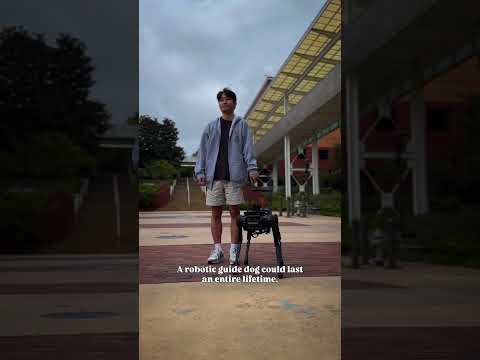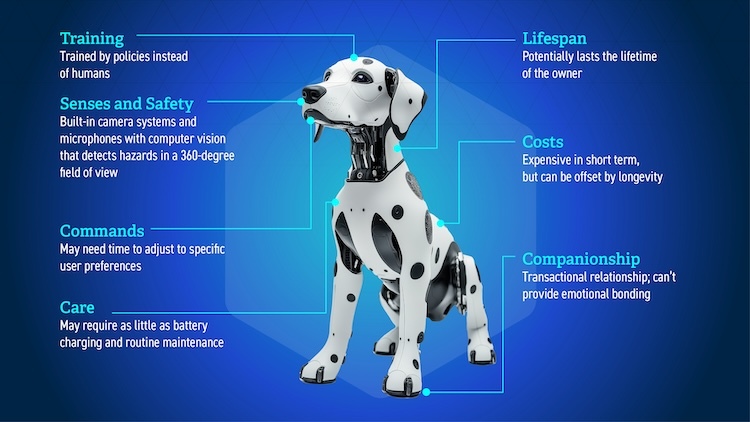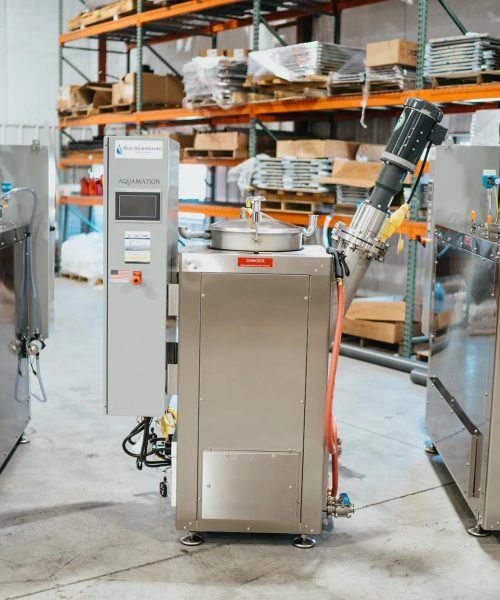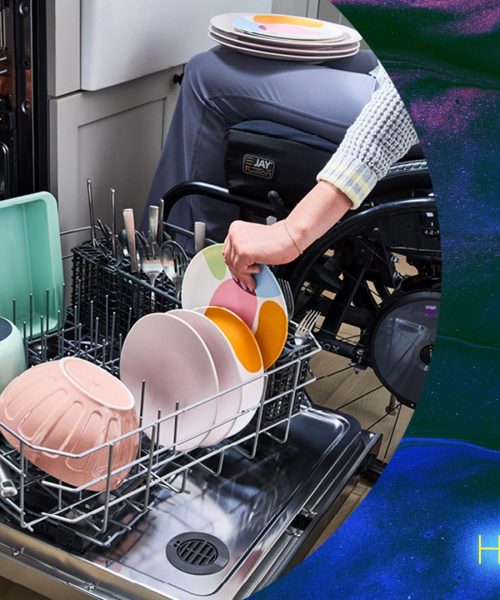Guide dogs that assist people with blindness or partial sightedness are a powerful reminder of the bond humans have formed with our four-legged companions. Properly trained working dogs serve as a second set of eyes and as a constant, high-stakes assistant, offering an unmatched ability to help their handlers avoid danger and navigate a busy world with confidence.
But guide dogs have limitations. Although it may not be obvious to the casual dog lover, these animals can cause headaches for some owners with disabilities. As living creatures, they require constant care and feeding, responsibilities that some people may not be physically or financially able to manage. And while many people do form strong bonds with their guide dogs, others view them more akin to tools–tools that shed and poop. Well-trained guide dogs can also cost upwards of $50,000 to train, making them inaccessible to many who might otherwise benefit.
That’s why the concept of a robotic “dog” can seem quite appealing. These robotic guide dogs, which have been tested by various universities for years, could offer many of the same benefits as real dogs, without the need for constant care.
But what should these robot dogs actually look like? That question has been top of mind for a research team at Georgia Tech, which is working to develop an optimal robotic guide dog platform, one that provides both reliability and safety for users, while also fitting into the physical world without drawing unwanted attention. Their proposed solution, outlined in a preprint paper, is a robot that resembles a dog without the cute cuddliness that attracts crowds eager to pet it or take selfies.
“We work with people who use guide dogs, [and] we also understand the challenges and costs of training a guide dog, the challenges of living with a guide dog, and the possibilities for technology to overcome these hurdles,” Georgia Tech School Interactive Computing Professor Bruce Walker said in an interview shared with Popular Science. “It turns out, we can make more robots than we can dogs.”

“For elderly people, especially with vision loss, it will be easier for them to keep this dog instead of having a real animal dog.” Georgia Tech Computer Science Ph.D Student J. Taery Kim said in an interview shared with Popular Science. “More people will have this opportunity to have their independent mobility than before.
Robot dogs: soft but not furry, approachable but not cute
As part of the study, researchers from Georgia Tech’s School of Interactive Computing surveyed blind and partially sighted individuals to understand what they wanted in a robotic guide dog. Overall, respondents expressed a preference for a robot that resembled a dog and appeared approachable in public settings. They also emphasized the importance of clear indicators (such as a vest) to signal that the robot is an assistive device. Other features included built-in GPS, Bluetooth connectivity, and accessible voice commands. Respondents also noted the need for long battery life and the ability for the robot to autonomously dock and recharge.
But respondents were clear that the robot should not be indistinguishable from a real dog. Specifically, they preferred a body texture that is soft but not furry, and emphasized that the robot shouldn’t be so cute that it attracts unwanted attention. In general, participants said they wanted to strike a balance: the robot should resemble a dog enough to blend in, but not so closely that it becomes a spectacle.
“A lot of people said they didn’t want the dog to look too cute or appealing because it would draw too much attention,” Aviv Cohav, one of the paper’s authors said in a statement.

Dogs can bark, but robots can talk back
Even the most advanced quadruped robot on the market today can’t match a real dog’s innate sense of smell or its highly developed navigational instincts. That said, robotic guide dogs offer other advantages. They don’t need food or veterinary care, and they can be equipped with 360-degree cameras and built-in AI detection systems that scan for cars, debris, and other hazards. Voice recognition capabilities also mean these robots could potentially understand far more commands than even the smartest dog. Built-in SOS functions also allow the robot to detect if a person has fallen and call for help.
Sure, a real dog can bark for assistance but it can’t dial 911. A robot, unlike a dog, can also talk back.
“The benefit of a robot guide dog is they can do verbal communication unlike an animal dog,” Georgia Tech Assistant professor Sehoon Ha said in a video interview shared with Popular Science. “We hope this robot can connect to large language models [LLMs] and talk to people.”

Directly asking blind and partially sighted individuals what they want in a robotic guide dog revealed several other preferences. One key concern, according to the researchers, was the need to limit the amount of noise the robot makes. Users need to hear the robot to know it’s functioning, but only to a point. If it’s too loud or sounds overly robotic, it can become disruptive, especially in crowded indoor environments.
Striking the right balance between meeting the immediate needs of users and blending seamlessly into public spaces is central to the researchers’ work. All of these factors are being taken into account as the researchers work to develop a useful robot dog prototype.
Related: [Can this robot help solve a guide dog shortage?]
The long walk toward a working robot dog
The idea of a robotic guide dog isn’t entirely new and actually dates back to Japan in the late 1970s. That early prototype, which failed to achieve commercial success, looked less like a dog and more like a deconstructed refrigerator on a leash. Since then, numerous universities and private companies have attempted to develop a usable version. Just last year, researchers at the University of Glasgow unveiled “RoboGuide,” an AI-powered quadruped robot capable of navigating its surroundings and avoiding obstacles in real time. Researchers at the University of Massachusetts Amherst are working on a similar design.

Some guide robots are already on the verge of being deployed, though on a limited scale. In China, researchers from Shanghai Jiao Tong University’s School of Mechanical Engineering have begun field-testing a six-legged, English Bulldog–sized robot that can reportedly plan routes and navigate around traffic. The six-leg design was introduced to enhance structural stability. Glidance, a U.S.-based company, has also developed a five-pound, vacuum cleaner–shaped autonomous guide robot called “Glide,” which moves simply by being pushed forward by the user. Glidance CEO Amos Miller, who has personally relied on guide dogs, summed up the potential advantages of robotic alternatives.
“You get the dog without the responsibility of the dog,” Miller previously told Popular Science, noting the advantage of robotic assistants.
Though each of these designs holds some promise, they are only truly useful to the people who rely on them if the robots can navigate broader social environments without drawing undue attention. Robots that are startling or distracting, and that confuse or intimidate the average passerby, risk doing more harm than good.
“To have impact, the technologies we produce must be produced with society in mind,” Walker said in a statement. “This is a holistic design that considers the users and all the people with whom the users interact.”






